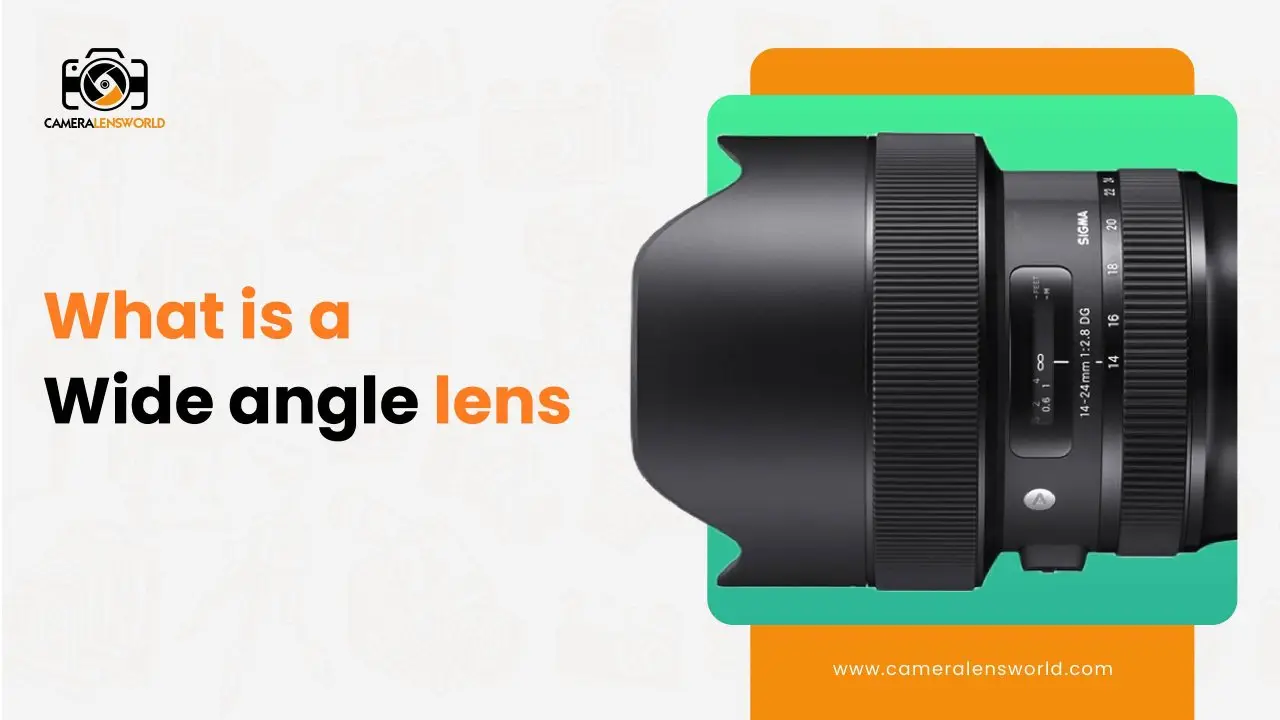
A wide angle lens is a special type of lens that lets us capture wide and expansive scenes that our eyes can’t naturally see.
It adds a unique perspective, making photos look more immersive and impressive.
Whether it’s stunning landscapes, tall buildings, or busy city streets, a wide angle lens helps us capture the beauty and depth of the world around us.
It distorts perspective and stretches the space between objects, making photos visually captivating.
With its ability to show a wide view and create impactful photos, a wide angle lens is a must-have tool for photographers who want to capture the grandeur of their surroundings.
For those venturing into the captivating realm of photography, eager to delve into the wonders of camera lenses, Explore my article “A Beginner’s Guide to Purchasing Camera Lenses” for valuable insights on lens-buying. Let’s unravel the lens secrets together!
Let’s now discuss Key Considerations for Expanding Your Perspective for buying wide angle lenses.
Features of wide angle lens
As we’ve discussed some basic things about what wide angle lenses actually do, let’s now have a quick read for optimizing wide angle photography.
| Focal Length Range | 35 mm or shorter |
| Maximum Aperture | from f/2.8 to f/4.0 |
| Image Stabilization | Provides vibration reduction (VR), optical stabilization (OS)Depending on the model. |
| Autofocus Performance | Provides Ultrasonic Motor (USM) or Silent Wave Motor (SWM) depending on the model. |
| Compatibility and Mount | This relies on matching the lens mount of the lens to the camera’s specific lens mount. |
Types of wide angle lens
Lets now have the light on types of wide angle lens
- Ultrawide-angle lens
- Wide-angle lens
- Standard wide-angle lenses
- Fisheye Wide Angle Lens
- Rectilinear Wide Angle Lens
- Tilt-Shift Wide Angle Lens
What are wide angle Lens used for?
After knowing the types of lenses it’s necessary to have information about what wide angles are used for. So, let’s now have an in-depth analysis on types of wide angle lenses.
1- Ultra wide angle lens
An ultra wide angle lens is a type of lens with extremely short focal length, typically below 24mm on a full-frame camera.
It provides an exceptionally wide field of view, allowing you to capture a broader perspective and fit more of the scene into the frame.
Ultra wide angle lenses are commonly used in landscape, architectural, and interior photography to emphasize vastness, depth, and dramatic perspectives.
They excel at capturing expansive vistas, architectural structures, and immersive environments.
The unique characteristics of ultra wide angle lenses make them a valuable tool for creative storytelling and visually striking compositions that can add impact and a sense of grandeur to your images.
2- Wide-angle lens
A wide angle lens is a type of lens with a shorter focal length than a standard lens, typically ranging from 14mm to 35mm on a full-frame camera.
It offers a wider field of view, allowing you to capture a larger scene within the frame.
Wide angle lenses are known for their ability to exaggerate perspective and create a sense of depth, making them popular for landscape, architecture, and group photography.
They can also be used creatively for close-up shots to emphasize a subject’s proximity and incorporate more of the surrounding environment.
Wide angle lenses provide a unique visual experience, expanding the creative possibilities for photographers.
3- Standard wide angle lens
A standard wide angle lens, typically with a focal length ranging from 24mm to 35mm on a full-frame camera, strikes a balance between a standard lens and an ultra-wide angle lens.
It offers a wider field of view compared to a standard lens, allowing you to capture a broader perspective while still maintaining a natural and realistic look.
This range is versatile, making it suitable for various photography genres such as landscape, street, and environmental portraits.
The standard wide angle lens of 24mm to 35mm provides a moderate level of distortion, enabling creative compositions and emphasizing the foreground while still maintaining a sense of depth and context within the frame.
4- Fisheye Wide Angle Lens
A fisheye wide angle lens is a specialized lens that provides an extreme wide-angle view with a distinctive fisheye effect.
It typically has a focal length of 8mm to 15mm, capturing an extremely wide field of view of up to 180 degrees or more.
The fisheye effect creates a characteristic barrel distortion, resulting in curved lines and a highly exaggerated perspective.
This lens type is often used for artistic and creative purposes, allowing photographers to capture unique and distorted images with a surreal or immersive feel.
Fisheye wide angle lenses are popular for capturing dynamic landscapes, architecture, and creative compositions that emphasize distortion and wide expanses of space.
5- Rectilinear Wide Angle Lens
A rectilinear wide angle lens is a type of wide angle lens that aims to provide a straight and undistorted representation of the scene.
Unlike fisheye lenses, which exhibit barrel distortion, rectilinear wide angle lenses aim to render straight lines as straight, making them ideal for architectural photography and other scenarios where accurate representation is desired.
They offer excellent edge-to-edge sharpness and are popular among landscape photographers who value precise geometry and natural-looking perspectives in their images.
6- Tilt-Shift Wide Angle Lens
A tilt-shift wide angle lens is a specialized lens that allows for both tilt and shift movements, providing unique control over perspective and depth of field.
It is commonly used in architectural, interior, and landscape photography.
Tilt movements enable selective focusing by tilting the lens relative to the camera’s sensor plane, creating a desired plane of focus, even with a wide angle of view.
Shift movements correct converging lines and eliminate distortion, particularly when photographing tall buildings.
The combination of tilt and shift capabilities in a wide angle lens empowers photographers to achieve precise control over perspective, depth of field, and distortion correction, resulting in highly accurate and creative images.
Exteriors of buildings look best when shot with a 24mm wide angle lens, while inside benefit more with wider optics.
Choosing the Right Moments: Ideal Scenarios for Utilizing a Wide Angle Lens
- Landscape photography
- Architecture & interior photography
- Group and Environmental Portraits
- Street photography
- Documentary and Photojournalism
- Wildlife photography
1- Landscape photography (10-35 mm lens)
There are various lens models used for landscape photography, but my popular choice is a wide-angle lens.
Wide-angle lenses, typically ranging from 10mm to 35mm focal lengths, are preferred for capturing expansive scenes, emphasizing the vastness and depth of landscapes.
They allow for a broader field of view, enabling photographers to include more of the surrounding environment in their compositions.
Some of my tested recommendations which I would suggest you:
- Nikon 14-24mm f/2.8G ED.
- Canon EF 16-35mm f/4L IS USM.
- Sony FE 16-35mm f/2.8 GM.
- Sigma 14mm f/1.8 DG HSM Art.
- Nikon 24-70mm f/2.8E ED VR.
- Canon 24-70mm f/2.8L II USM.
2- Architecture & interior photography (16-35mm lens)
For architecture and interior photography, my popular lens choice is a tilt-shift lens.
Tilt-shift lenses offer unique features that help correct perspective distortion and control depth of field, making them well-suited for capturing architectural structures and interior spaces accurately.
These lenses allow photographers to adjust the perspective, shift the focal plane, and minimize converging lines, resulting in precise and visually appealing images of buildings, interiors, and architectural details.
I personally found some of the models that are suitable for architecture and interior photography:
- Nikon AF-S NIKKOR 14-24mm f/2.8G ED
- Tamron 17-28mm f/2.8 Di III RXD
- Sony FE 12-24mm f/4 G
3- Group and Environmental Portraits
(24-35 mm lens)
When it comes to group and environmental portraits, my choice is a versatile lens i.e medium telephoto lens.
Lenses in the range of 50mm to 85mm are commonly used for this type of photography.
They provide a flattering perspective, allowing the photographer to capture the subjects with a natural look while maintaining a comfortable working distance.
Medium telephoto lenses also offer a shallow depth of field, allowing for subject separation from the background while still capturing the surrounding environment, making them ideal for group portraits and environmental portraits where both the subject and their surroundings play a significant role.
My experience tells me to must try following lenses for group and environment photography:
- Canon EF 100-400mm f/4.5-5.6L IS II USM
- TAMRON 24MM F2.8 DI III OSD
- NIKON 24MM F1.8 Z
- Sony FE 16-35mm f/2.8 GM
4- Street photography
(35 mm lens)
For street photography, my choice is a prime lens with a focal length between 35mm and 50mm.
Prime lenses offer a wide maximum aperture, allowing for faster shutter speeds and better low-light performance.
The focal length range mentioned provides a natural field of view, closely resembling what the human eye sees, making it well-suited for capturing candid moments and storytelling on the streets.
This focal length range allows photographers to be close enough to their subjects while also incorporating the surrounding environment, resulting in compelling and immersive street photographs.
Must try lenses for street photography:
- Sony FE 35mm f/2.8 Prime Lens
- Fujifilm XF 35mm f/1.4 Prime Lens
- Sigma 35mm f/1.4 Art DG HSM Prime Lens for Nikon F-Mount
- Canon RF 35mm f1.8 Macro IS STM
- Nikon Z 35mm F1.8 S Lens
5- Documentary and Photojournalism
(Standard 50 mm lens)
For documentary and photojournalism purposes, a versatile lens choice is a zoom lens with a wide focal length range.
This allows photographers to quickly adapt to different shooting scenarios and capture a variety of perspectives without changing lenses frequently.
A popular lens model for this type of photography is the 24-70mm f/2.8 lens, available from various camera manufacturers such as Canon, Nikon, and Sony.
This lens provides a flexible focal length range that covers wide-angle to short telephoto, making it suitable for capturing both environmental shots and intimate portraits. The wide maximum aperture of f/2.8 ensures good low-light performance and shallow depth of field when needed.
Recommended lenses for documentary and photojournalism photography:
- Canon RF 24-70mm f2.8 L IS USM.
- Canon RF 70-200mm f2.8 L IS USM.
- Sony 70-200mm f2.8 G Master OSS II
- Sony 70-200mm f2.8 G Master OSS II
- Tamron 28-75mm f2.8 G2
- Nikon 24-70mm f2.8 Z S
- Nikon 70-200mm f2.8 Z VR S
- Leica 28mm f2 APO SL
- Canon EF 16-35mm f/2.8L III USM
6- Wildlife photography
(300-400 mm for land animals, 600mm for birds)
For wildlife photography, telephoto lenses with long focal lengths are commonly used to capture distant and elusive subjects.
These lenses offer a significant zoom range, allowing photographers to get close-up shots of wildlife without disturbing them.
They also provide image stabilization to compensate for camera shake and maintain sharpness. The long focal lengths help in isolating the subject from the background and capturing fine details, making them ideal for wildlife photography.
These lenses would definitely help you to capture wildlife pleasantly:
- Nikon AF-S NIKKOR 200-500mm f/5.6E ED VR
- Fujifilm XF 100-400mm f/4.5-5.6R LM OIS
- Sony FE 200-600mm f/5.6-6.3 ED G OSS
- Tamron SP 150-600mm f/5-6.3 Di VC USD
- Canon RF 100-500mm f/4.5-7.1L IS USM
- Nikon AF-P DX 70-300mm f/4.5-6.3 ED VR
- Canon EF 70-300mm f/4-5.6 IS II USM
What’s the difference between wide-angle and ultra-wide-angle lenses?
| Focal length | Wide angle lenses typically have a focal length ranging from 24mm to 35mm on a full-frame camera. | In contrast, ultra-wide angle lenses have an even shorter focal length, usually below 24mm, such as 14mm or 16mm. |
| Field of view | Wide angle lenses offer a wide field of view, but not as expansive as ultra-wide angle lenses. | Ultra-wide angle lenses provide an extremely wide field of view, often reaching 100 degrees or more, capturing a greater expanse of the scene. |
| Perspective Distortion | Wide angle lenses exhibit some degree of perspective distortion, where objects closer to the lens appear larger, while those further away appear smaller. | Ultra-wide angle lenses accentuate this distortion, creating a more pronounced “fish-eye” effect with curved lines and exaggerated perspectives. |
| Usage Scenarios | Wide angle lenses are versatile and commonly used for landscape, architecture, and general photography, offering a broader perspective while maintaining a natural look. | Ultra-wide angle lenses excel in capturing expansive landscapes, tight interiors, and creative compositions that emphasize distortion and a dramatic sense of space. |
| Creative Possibilities | Wide angle lenses provide a wide field of view without extreme distortion, allowing for more traditional and versatile compositions. | Ultra-wide angle lenses, on the other hand, offer unique and creative possibilities, enabling photographers to explore distortion, exaggerated perspectives, and a more immersive visual experience. |
Conclusion:
Having personally used the wide-angle lenses suggested in this article, I can attest to their exceptional performance for group portraits and environmental photography. The image quality, sharpness, and versatility of these lenses have surpassed my expectations, allowing me to capture stunning compositions. Whether it’s the impressive zoom range, fast aperture, or compact design, each lens offers unique advantages. These lenses have proven to be reliable tools, delivering outstanding results in various shooting and photography conditions. I highly recommend these options to photographers seeking to elevate their wide-angle photography and capture breathtaking moments with clarity and detail.
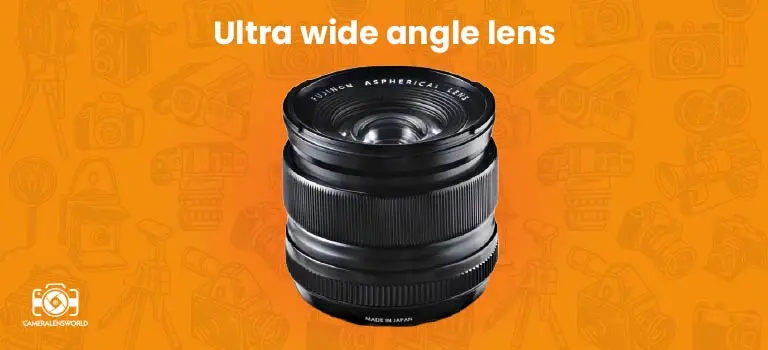
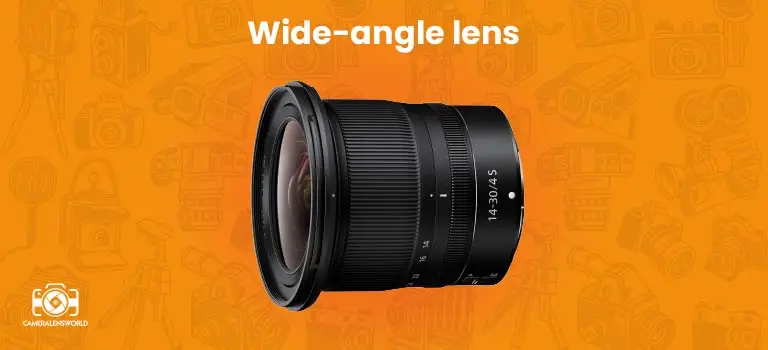
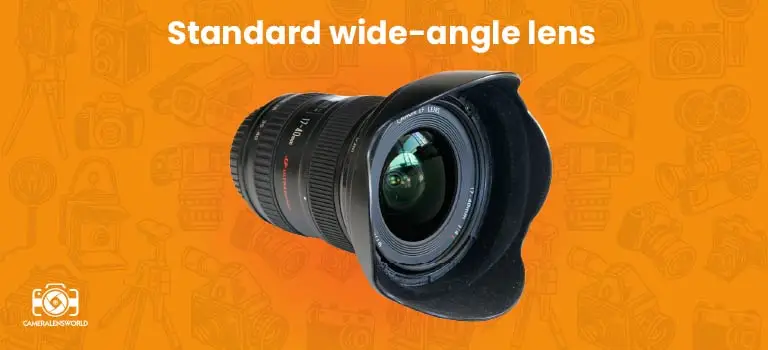
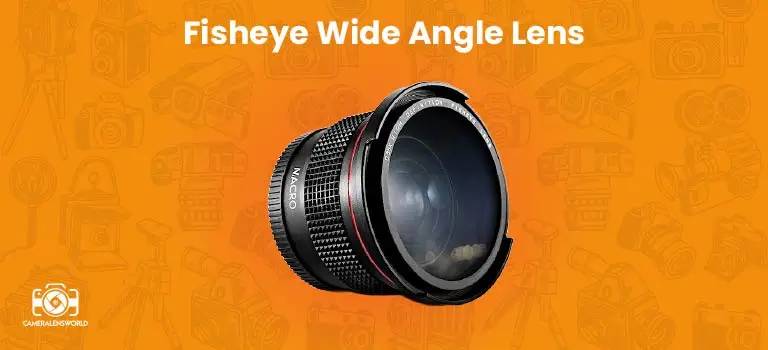
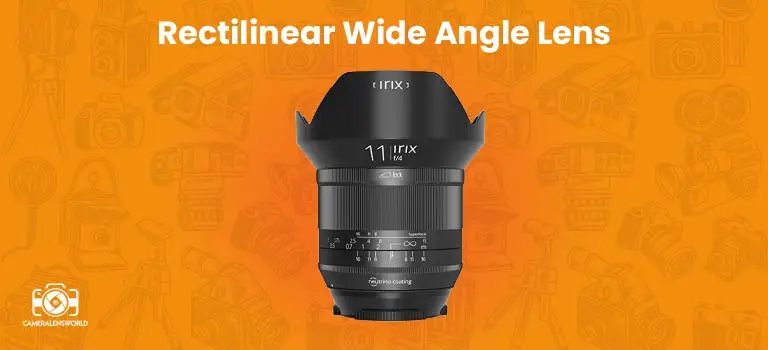
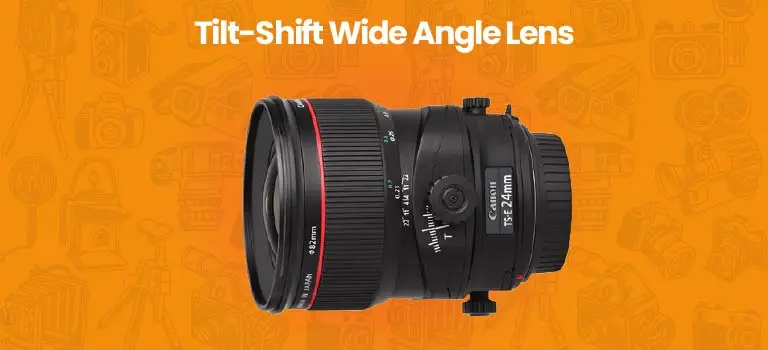
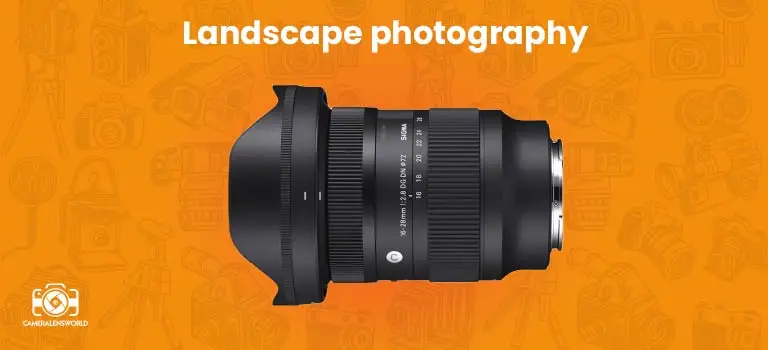

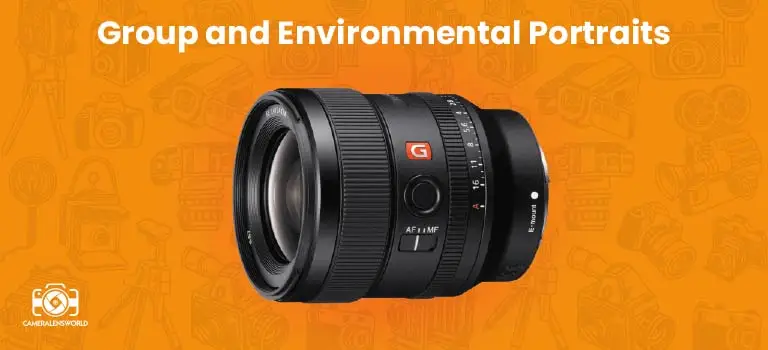
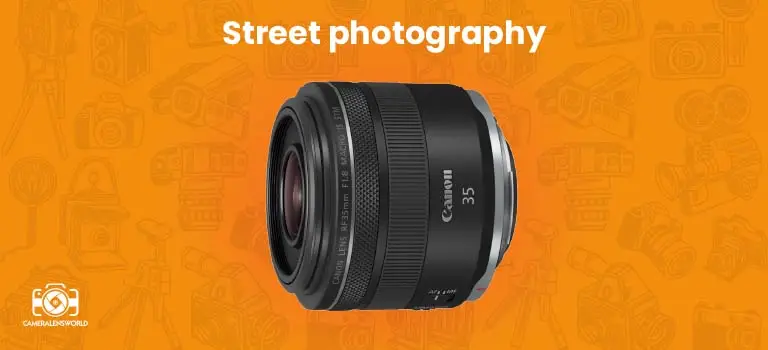

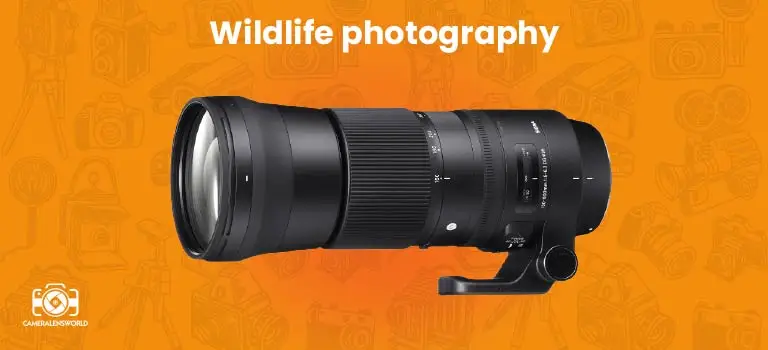

Leave a Reply
You must be logged in to post a comment.